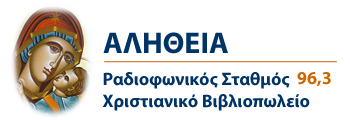At the foot of the God-trodden Mountain of Sinai, Emperor Justinian built the great basilica of St. Catherine's Monastery to the Transfiguration of Christ - the 'Feast of monastic feasts'.
‘Let us be transfigured by that glorious transfiguration,’ exhorted St. Anastasios of Sinai in his sermon on the Feast, for ‘Jesus goes before us to show us the way, both up the mountain and into heaven … making us sharers in His divinity and raising us to heights as yet undreamed of.’
Archbishop Damianos of Sinai has pointed out that the manifestation of the Holy Trinity at the Transfiguration was foreshadowed by the earlier theophany on Mount Sinai, where the voice of God, the light of the Sun of Righteousness, and the cloud of the Holy Spirit were all similarly present.
There is a difference though: While the eyes of the apostles were enabled to see ‘a dim ray’ of the divine radiance of Christ at His Transfiguration, the Uncreated Light appears to Moses on Sinai as ‘luminous darkness’. It is invisible - except to eyes that have been transformed by the Holy Spirit.
As His Eminence also noted, the full revelation of the Trinity is reserved for the New Testament. Thus the wishes of both Moses and Elias to see God clearly on Sinai are fulfilled at the Transfiguration of Christ.
As the iconic figures of the Law and Prophets, Moses and Elias are called there to bear the witness of the Old Testament upon the fulfillment of its entire revelation in Christ, "the beginning and end of every prophetic utterance and law’, wrote St. Gregory of Sinai in his Discourse on the Transfiguration.
More so than the icons of his own era, Gregory’s theological reflections recall Sinai’s famed mosaic Transfiguration, which struck Princeton’s Kurt Weitzmann as ‘a vision of heaven in the wilderness of Moses’.*
Similarly to the unusual Sinai icon below (photo right center) with its polished gold rays of light extending from the mandorla of Christ, the very early Transfiguration mosaic is formed on the proportions of the Greek cross. All figures remain equidistant from Christ, without the vertical elongation of the hierarchical plan that later came to distance the Lord and His prophets from the apostles.
Gregory would have had ample opportunity during the lengthy monastic services to study the mosaic, for his 13th century tenure on Sinai predated the massive Cretan iconostasis which has prevented view of the mosaic from the nave since the 17th century.
While his ascetic cell was high on the Mountain, according to monastic custom, Gregory would have descended to the Monastery for the church services on the great Feasts. In fact, his commentary on Moses and Elias focuses on the same nuanced points brought out in the hymns and readings from the Vespers of the Transfiguration, especially regarding the significance of the Old Testament prophets' presence at the Transfiguration, many centuries after their earthly lives.
While Moses appeared ‘from out the grave’, Gregory emphasized, Elias had never died. Their presence at the Transfiguration thus proves Christ to be God of both the living and the dead, ‘the Word which existed before all ages, flashing forth as lightning and resplendent beyond the sun as God, before whom the powers from above shuddered, and the earth from below trembled with joy.'
Christ Himself thus answers the question He had posed to His apostles, noted the mystic Gregory, just a few days before his Transfiguration:
‘Who do you say I am?’
… The most crucial question, it has been noted, that every human being will ever answer for himself.











Δεν υπάρχουν σχόλια:
Δημοσίευση σχολίου